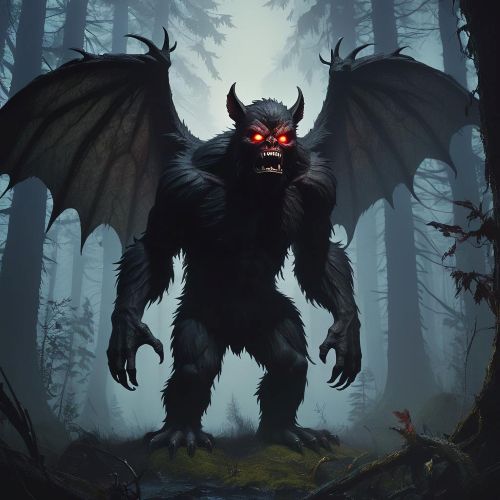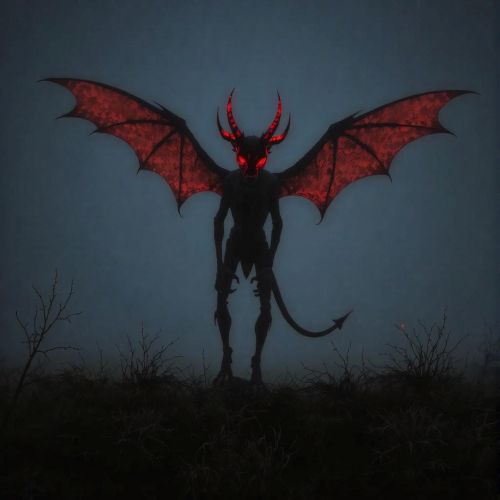Chupacabra : The Livestock Killer
| Description | |
|---|---|
| Origin | Mexico |
| Classification | Cryptid |
| Demeanour | Evil |
| Habitat | Forests |
| Status | Not Proved |

Introduction
The Chupacabra, one of the most enigmatic creatures in modern mythology, is a central figure in Latin American folklore, particularly in Mexico, Puerto Rico, and the southern United States. Translating to “goat-sucker” in Spanish, the Chupacabra is best known for its grisly habit of attacking livestock and reportedly draining them of blood. Since its first widespread appearance in the 1990s, the creature has become a symbol of fear, speculation, and cultural storytelling, embodying the strange intersection between folklore, urban legend, and media sensationalism.
Physical Attributes
Descriptions of the Chupacabra have evolved significantly based on location and time, leading to two primary visual representations. The first and most iconic version resembles a reptilian being, about three to four feet tall, with scaly greenish-gray skin and sharp spines running down its back. This version walks upright on powerful hind legs, much like a kangaroo, and is often described with glowing red eyes, an elongated head, and fearsome claws and fangs.
In contrast, sightings from the U.S.–Mexico border often depict a more dog-like or coyote-esque creature. These versions appear hairless, emaciated, and bear skin irritated by mange, a condition that can make familiar animals look monstrous. Despite these starkly different portrayals, both versions of the Chupacabra share an aura of menace, mystery, and otherworldliness.
First Sighting/Reporting
While similar livestock-killing legends predate it, the modern Chupacabra story took root in Puerto Rico in 1995. Farmers were baffled when they discovered animals mysteriously dead, with strange puncture wounds and allegedly no blood in their bodies. The most famous of these incidents involved eight sheep found with symmetrical wounds in their chests. That same year, a woman named Madelyne Tolentino claimed to have seen a bizarre, alien-looking creature near her home in Canóvanas.
Her description bore an uncanny resemblance to the creature from the sci-fi horror movie Species, released just weeks earlier—a detail that has led skeptics to believe her account may have been unconsciously influenced by popular media. Regardless, Tolentino’s testimony, combined with the livestock deaths, ignited a media frenzy that spread the legend rapidly across the Americas.
Other Names
Though universally known as the Chupacabra, the creature goes by several other names and is tied to related myths in different cultures. In Puerto Rico, early reports linked it to a similar legend called “El Vampiro de Moca,” a shadowy animal attacker from the 1970s. In Mexico, it’s frequently called “El Chupacabras” and is sometimes confused with or related to regional beasts like the Nahual or the Cadejo. Elsewhere, similar beings are known, such as the “Sigbin” in Filipino folklore or the “Ozark Howler” in American cryptid lore. These cultural counterparts highlight the widespread human tendency to mythologize the unknown and the terrifying.
Modus Operandi
The Chupacabra is said to be a nocturnal predator with an unorthodox and chilling method of attack. Unlike traditional carnivores that tear apart flesh, it reportedly uses sharp teeth or a proboscis-like tongue to pierce its prey—typically goats, chickens, or sheep—and suck out their blood. The bodies are often left intact, with minimal blood at the scene and small, precise puncture wounds, leading many to suspect a vampire-like feeding process.
Some reports describe a foul smell or a low hissing sound accompanying an attack, while others claim the animal has a hypnotic or paralyzing ability, immobilizing prey before feeding. However, scientists argue that such clean attacks could be the result of scavengers or misunderstood injuries, especially when animals like coyotes or dogs, suffering from mange, are involved.
Pop Culture References
The Chupacabra quickly gained traction in global popular culture. It has been featured in everything from horror films and novels to cartoons and collectible toys. Its first major television exposure came with The X-Files episode “El Mundo Gira,” which linked the creature with otherworldly and governmental conspiracies. The animated show South Park parodied the legend in its episode “Jewpacabra,” while children’s books like The Adventures of Chupacabra Charlie give the myth a whimsical twist.
In gaming, the creature has appeared in Fallout: New Vegas, Red Dead Redemption: Undead Nightmare, and on Magic: The Gathering cards. Artists and musicians have also drawn inspiration from the Chupacabra, turning it into a symbol of Latin American horror and intrigue. It even shows up in memes and internet lore, where it continues to inspire curiosity, humor, and fear in equal measure.
Current Status
Although interest in the Chupacabra peaked in the late 1990s and early 2000s, new reports still surface occasionally from regions like Texas, Chile, and even parts of Asia. These sightings often follow patterns: unexplained livestock deaths, eerie howls at night, or blurry photos of emaciated animals. Social media has replaced traditional news as the main driver of new Chupacabra hysteria, allowing stories to go viral within hours and rekindling local belief in the creature.
In rural areas, where livestock are vital for survival, the Chupacabra remains more than just a myth—it is a cautionary tale, a scapegoat, and a cultural touchstone. It represents a blend of fear, superstition, and the enduring power of storytelling.
Source
American Museum of Natural History. (n.d.). Chupacabras: The legend and reality. Retrieved June 11, 2025, from https://www.amnh.org/explore/news-blogs/on-exhibit-posts/chupacabras-the-legend-and-reality
Britannica. (n.d.). Chupacabra. In Encyclopaedia Britannica online. Retrieved June 11, 2025, from https://www.britannica.com/topic/chupacabra
Live Science. (2021, June 8). What is the chupacabra? Retrieved June 11, 2025, from https://www.livescience.com/41648-chupacabra.html
Mongabay. (2019, October 10). The truth behind the chupacabra. Retrieved June 11, 2025, from https://news.mongabay.com/2019/10/the-truth-behind-the-chupacabra/
AIPT Comics. (2018, November 15). Chupacabra: How the legend evolved. Retrieved June 11, 2025, from https://aiptcomics.com/2018/11/15/chupacabra-legend-evolution/
Raincross Gazette. (2017, July 4). Coyotes and the chupacabra legend. Retrieved June 11, 2025, from https://www.raincrossgazette.com/coyote-chupacabra-debunking/
HowStuffWorks. (2020, March 20). Chupacabra: Mystery beast of Latin America. Retrieved June 11, 2025, from https://www.howstuffworks.com/chupacabra.htm
NBC News. (2016, July 27). Scientists debunk chupacabra myth. Retrieved June 11, 2025, from https://www.nbcnews.com/science/science-news/scientists-debunk-chupacabra-myth-n619776







